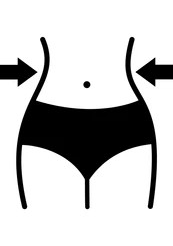High-Intensity Interval Training—famous in the fitness world as HIIT—packs a punch when it comes to workouts. It’s all about getting your heart racing by alternating between fast, intense bursts of exercise and short recovery periods. This isn’t some fancy fad; it’s scientifically proven to torch calories and boost your cardiovascular fitness, making it a favorite for many.
So, why should beginners give HIIT a shot? Well, it’s flexible and effective, that’s why. You don’t need to be an athlete to jump in. Whether you’re just getting off the couch or looking to spice up your workout routine, HIIT can be shaped to fit any fitness level. You go hard for a few seconds, take a breather, and then repeat. Simple as that!
There’s some science magic happening here too. Your body not only burns calories during the workout but continues to do so even after you’re done. This is thanks to something called the afterburn effect, or EPOC (Excess Post-Exercise Oxygen Consumption). It basically means your body is still chipping away at those calories long after your workout ends.
HIIT is more than just a workout— it’s a game-changer. You can do it at home, at the gym, or even in the park. And as you get stronger, you can tweak the routines. It’s cost-effective, time-efficient, and it’s backed by science. If you’re new to exercise or just looking to get more out of your daily grind, HIIT might just be your new best friend!
Developing a Beginner-Friendly HIIT Plan
Creating a HIIT routine as a newbie might seem daunting, but fear not! Crafting a safe and effective plan is totally doable. Start with the basics: choose a few exercises you’re comfortable with, like jumping jacks or squats, and mix them into your intervals.
Now, let’s talk about structure. For beginners, a 1:2 work-to-rest ratio usually works great. For instance, sprint hard for 30 seconds and then walk for a full minute. This allows your body the time it needs to recover before hitting it hard again.
It’s important to mix in exercises targeting different muscle groups, avoiding overuse and allowing your body to get used to the activity. You might want to do a session focusing on the lower body one day and arms the next. Balance is key here.
Pay attention to your body’s signals. Feeling too breathless or experiencing pain? That’s the cue to pause. Your HIIT journey should push limitations but never cross into injury territory.
Remember, the key to gaining the most from HIIT is taking it slow at first. Increased frequency and intensity will come with time, as your fitness level progresses. Gradually extend your session length as you become more comfortable and confident.
And don’t forget about those rest periods! They might seem like ‘down time,’ but they’re crucial to replenish energy, stay healthy, and ultimately boost your performance.
Essential Equipment and HIIT Techniques for Newbies
You don’t need to break the bank to get started with HIIT. In fact, many exercises rely just on your body weight. But if you’re looking to step up your game, a few basic pieces of equipment can make all the difference. A good-quality yoga mat provides a cushioned surface for those sweaty sessions, while resistance bands and dumbbells can up your intensity, giving muscles an extra challenge without a massive investment.
When it comes to HIIT techniques, simplicity is your friend. Start with exercises like burpees, high knees, and mountain climbers—dynamic and effective movements that get your heart rate up quickly. These moves are beginner-friendly and can be done almost anywhere, making them a great starting point.
Tracking your progress is essential. The simplest way is by keeping tabs on how many sets or reps you can do in a given time without sacrificing form. Remember, quality trumps quantity. Pushing just a little further each session can be motivational milestones worth celebrating.
As you get more confident, start tweaking your routine to match your growing abilities. This might mean adding more rounds, shortening rest periods, or increasing the intensity with heavier weights. Consistent monitoring ensures you stay aligned with your goals, adapting as necessary.
The Role of Nutrition and Lifestyle in Supporting HIIT
Let’s get real exercise alone isn’t the whole story when it comes to getting the most out of your HIIT training. Eating right plays a big role in your success. Your body needs fuel, so incorporating a balanced diet stuffed with lean proteins, whole grains, and plenty of veggies can maximize your workouts.
Hydration is another hero here. Sweating it out during those high-intensity intervals means you need to replace lost fluids to keep your body in top shape. Keep a water bottle handy and make a habit of regular sips before, during, and after your session.
Pre and post-workout nutrition really does make a difference. A small snack, like a banana or some yogurt, before your workout can provide the energy kick you need. Afterwards, refueling with a combination of protein and carbs helps muscle recovery and rebuilding.
Beyond food and hydration, lifestyle choices impact your HIIT journey. Ensure you’re clocking enough sleep to help your body recover and grow stronger. Managing stress also matters since it can mess with your motivation and energy levels.
Juggling these components—nutrition, hydration, sleep, and stress—can feel like a balancing act, but they’re key to making the most of your HIIT regimen. Every bit of attention you give them pays back in spades, boosting your overall health and helping you stay committed to your fitness journey.

